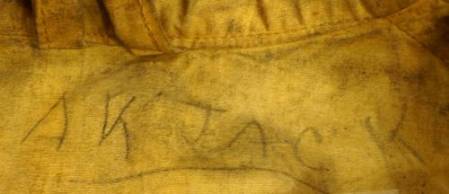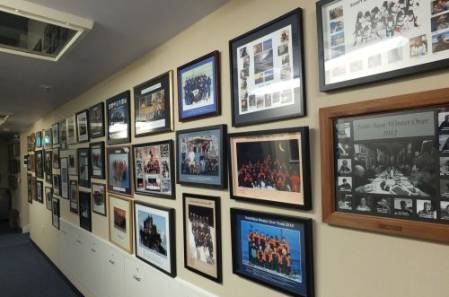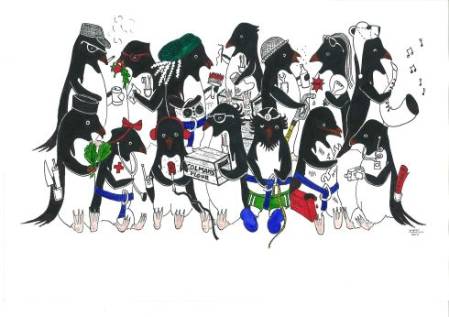Author: Stefanie
Date: 20 August 2013
Temperature: -15.3
Wind speed: 12 knots
Temp with wind chill: -45
Sunrise: N/A
Sunset: N/A
Andrew Keith Jack, part of the Ross Sea Party, owned a yellow oiled jacket and slept in the same bottom bunk bed as Thomas Griffith Taylor had in 1911 in the Terra Nova Hut at Cape Evans. We know this because his name is inscribed with the same hand on both: 'A K Jack' has been written in thick bold letters on the inner collar of the yellow jacket and on the wall beside the bunk in the Hut. Thomas Griffiths Taylor also wrote his initials at the same bunk. The names on the walls continue to mark a presence, promoting historical value.
A K Jack's yellow oiled jacket
A K Jack's mark in bunk
For most, wintering over in the Antarctic is a once in a lifetime opportunity and therefore leaving ones mark behind can be significant and meaningful. At Scott Base we cannot write our names on the walls beside our beds or leave our belongings behind when we depart. Rather, we leave behind a mark in the form of a winter-over photo, which depicts each member of our 2013 winter-over team and hangs on the winter-over wall of fame.
Winter-over wall of fame
With the ever increasing light on the horizon, we can see the end of winter and anticipate the first sun rise, flight and fresh food with great excitement. But we must also prepare to say our farewells and leave. Last Wednesday, we celebrated our last supper together as a team and the following day Stefan and Marie left us. It is oddly reassuring that they remain with us in the form of floating heads in the 2013 winter-over photo…







